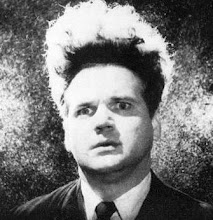Sunday, August 19, 2007
Ryszard Czekala
Saturday, August 11, 2007
Just Another Saturday . . .

This guy is the contemporary William S. Burroughs of hand-drawn animation! A brilliant satirist employing a genuine syntax of over-the-top violence, eroticism, and societal criticism all wrapped up in a turgid editing style. You gotta’ love it.
The Sound of Music, 1992
Wednesday, August 8, 2007
Anamorphosis
- Webster’s, 1913.
 During the 19th century the technique became more of a novelty feature, and dropped from the realm of fine art. Yet, not only did Anamorphosis see new life during the 20th century, from artists such as Marcel Duchamp and Salvador Dali, it has also become the basic principle behind such film formats as CinemaScope and Panavision, employing anamorphic lenses on motion picture cameras and projectors; ‘squeezing’ the image horizontally to fit into the film frame, and then ‘stretching’ it while being projected through a complementary lens during projection.
During the 19th century the technique became more of a novelty feature, and dropped from the realm of fine art. Yet, not only did Anamorphosis see new life during the 20th century, from artists such as Marcel Duchamp and Salvador Dali, it has also become the basic principle behind such film formats as CinemaScope and Panavision, employing anamorphic lenses on motion picture cameras and projectors; ‘squeezing’ the image horizontally to fit into the film frame, and then ‘stretching’ it while being projected through a complementary lens during projection.
De Artificiali Perspectiva (Anamorphosis), 1991, by the Brothers Quay.


